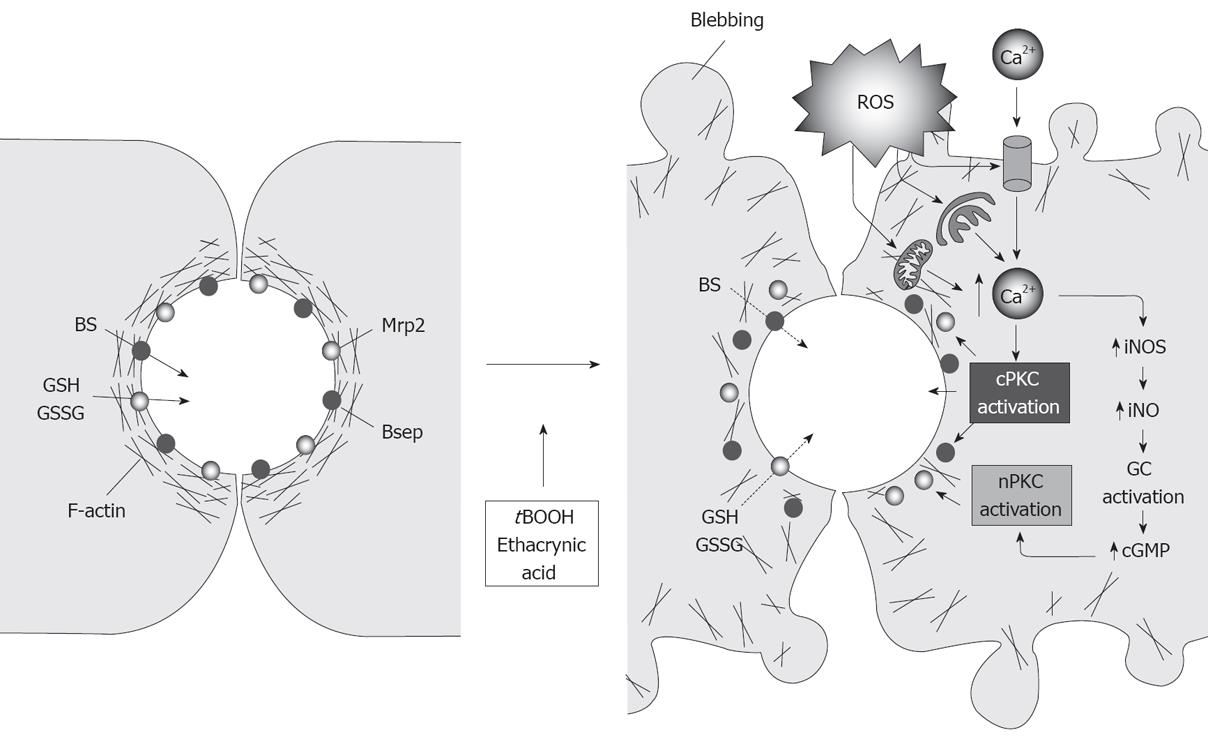Copyright
©2008 The WJG Press and Baishideng.
World J Gastroenterol. Nov 28, 2008; 14(44): 6786-6801
Published online Nov 28, 2008. doi: 10.3748/wjg.14.6786
Published online Nov 28, 2008. doi: 10.3748/wjg.14.6786
Figure 7 Endocytic internalization of canalicular transporters under oxidative stress.
In normal cells, the pericanalicular arrangement of F-actin allows for the appropriate insertion of the canalicular transporters in their membrane domain. Reactive oxygen species produced by the administration of oxidizing compounds, such as tBOOH or ethacrynic acid, induces mobilization of Ca2+ across the plasma membrane and membranes of the calciosome (smooth ER and mitochondria), and the subsequent activation of cPKC. cPKC activation induces blebbing and redistribution of F-actin from the pericanalicular region to the cell body. This rearrangement, in turn, leads to canalicular transporter internalization. Moderate Ca2+ elevations may also activate iNOS, which induces NO-mediated guanylate cyclase activation and further cGMP-mediated activation of nPKC, which may internalize selectively Mrp2.
- Citation: Roma MG, Crocenzi FA, Mottino AD. Dynamic localization of hepatocellular transporters in health and disease. World J Gastroenterol 2008; 14(44): 6786-6801
- URL: https://www.wjgnet.com/1007-9327/full/v14/i44/6786.htm
- DOI: https://dx.doi.org/10.3748/wjg.14.6786









